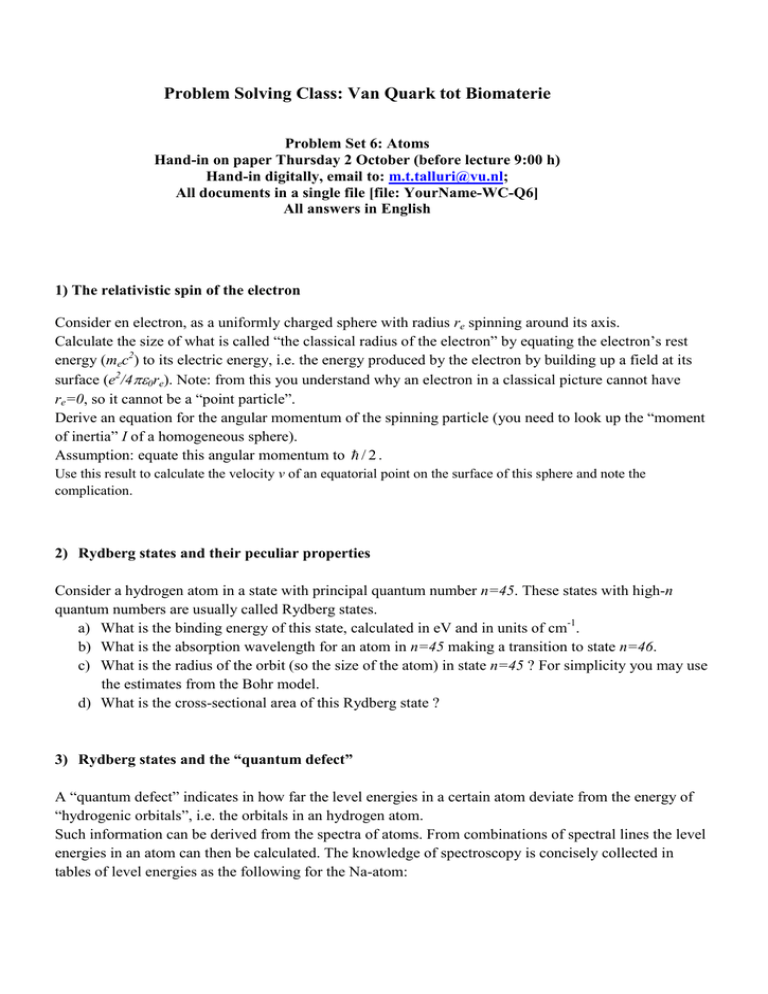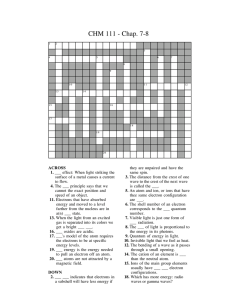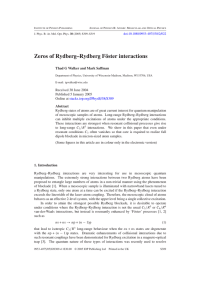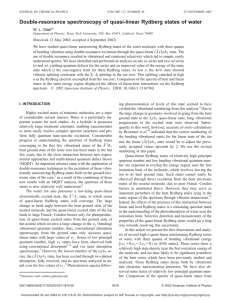Problem Solving Class: Van Quark tot Biomaterie
advertisement

Problem Solving Class: Van Quark tot Biomaterie Problem Set 6: Atoms Hand-in on paper Thursday 2 October (before lecture 9:00 h) Hand-in digitally, email to: m.t.talluri@vu.nl; All documents in a single file [file: YourName-WC-Q6] All answers in English 1) The relativistic spin of the electron Consider en electron, as a uniformly charged sphere with radius re spinning around its axis. Calculate the size of what is called “the classical radius of the electron” by equating the electron’s rest energy (mec2) to its electric energy, i.e. the energy produced by the electron by building up a field at its surface (e2/40re). Note: from this you understand why an electron in a classical picture cannot have re=0, so it cannot be a “point particle”. Derive an equation for the angular momentum of the spinning particle (you need to look up the “moment of inertia” I of a homogeneous sphere). Assumption: equate this angular momentum to / 2 . Use this result to calculate the velocity v of an equatorial point on the surface of this sphere and note the complication. 2) Rydberg states and their peculiar properties Consider a hydrogen atom in a state with principal quantum number n=45. These states with high-n quantum numbers are usually called Rydberg states. a) What is the binding energy of this state, calculated in eV and in units of cm-1. b) What is the absorption wavelength for an atom in n=45 making a transition to state n=46. c) What is the radius of the orbit (so the size of the atom) in state n=45 ? For simplicity you may use the estimates from the Bohr model. d) What is the cross-sectional area of this Rydberg state ? 3) Rydberg states and the “quantum defect” A “quantum defect” indicates in how far the level energies in a certain atom deviate from the energy of “hydrogenic orbitals”, i.e. the orbitals in an hydrogen atom. Such information can be derived from the spectra of atoms. From combinations of spectral lines the level energies in an atom can then be calculated. The knowledge of spectroscopy is concisely collected in tables of level energies as the following for the Na-atom: Values of the energies are as often in Spectroscopy given in units of cm-1. The ionisation energy (or the ionisation potentiaal IP) of Na is 41449.65 cm-1. Note that the energy scale is different now: the ground state is at E=0 and the ionization energy has a positive value. Treat Sodium (Natrium) further as a oneelectron system (Z=1), with a single electron outside a closed shell. a) Calculate the Rydberg constant RNa for the Sodium atom (mass =23). (Hint: reduced mass problem). The level energies in Sodium can be written via the equation: RNa E nl IP n l 2 b) Calculate the quantum defects s en f for s-orbitals and for f-orbitals form the energy table.








